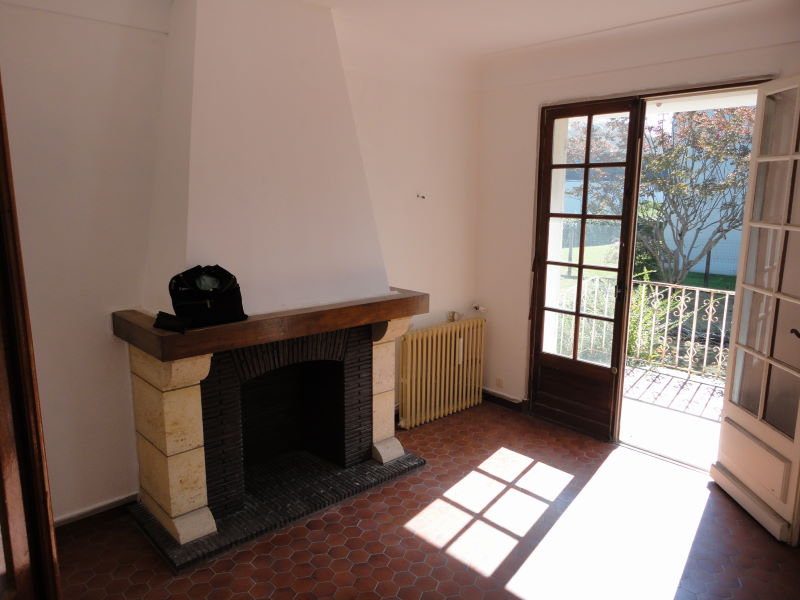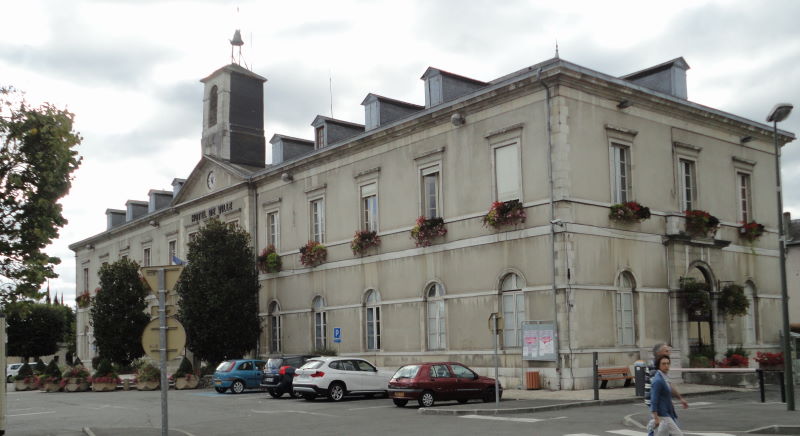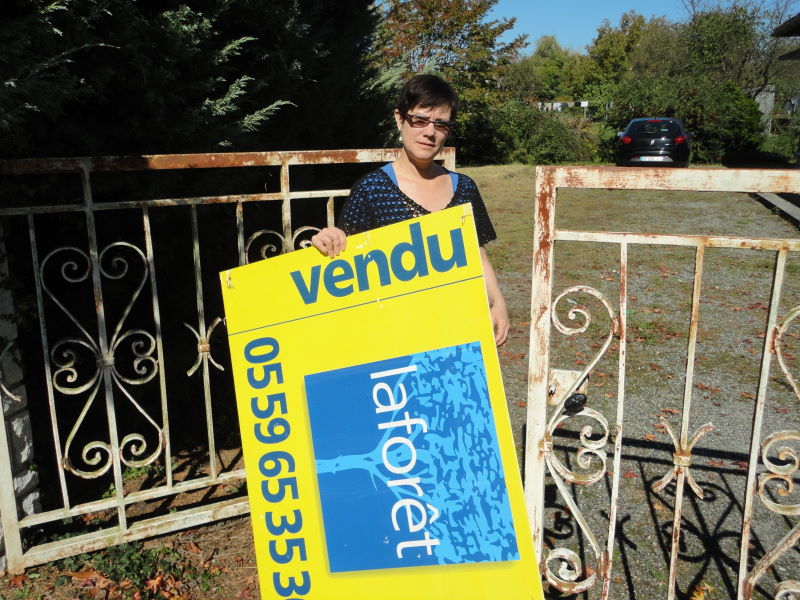October 7:
During a morning ride to Paris’ Gare Montparnasse, our taxi driver let us know that train service throughout France was disrupted due to a work stoppage organized by train conductors to protest a recent stabbing of one of their colleges. The TGV to Bordeaux left on time but stopped without explanation several times in mid journey. Result: Bordeaux 20 minutes late.
The new A65 or Autoroute d’Auvergne completed in 2010, winds through the lonely foret des Landes, a seemingly endless new growth forest spread across the sandy basin of the Gironde. I have read that this area was planted in pine trees by Napoleon III so that he would have a continuing supply of timber for the construction of his navies, as well as to help stabilize the constantly shifting landscape of sand. More recently, a violent Atlantic storm in 2006 was responsible for the destruction of something like 60% of the trees in this area. Work to salvage all the felled timber continues along the A65 to this day.
Orthez, ancient redoubt of the Viscounts of Béarn, market center for all of the northern Béarn, vital crossroads on the pilgrimage route of St.-Jacques, its fortified bridge an important crossing point for the rocky Gave de Pau (Gave = River in Béarnais) since its construction in medieval times. The bridge is still there, along with the lonely donjon of the hilltop castle of the Chateau de Montfort, destroyed during the 100 years war with England, and the Maison Jean d’Albret, home to the politically powerful mother of Henry of Navarre, a Viscount of Béarn, who would become Henri IV of France (who famously promised the country that there would be a chicken in every pot…in the Béarn, Poule en Pot or chicken simmered with vegetables, is still a popular dish) . These, along with the 14th C Eglise de Saint-Pierre, are the remaining vestiges of a time when Orthez was the most important city in the Béarn, before the rise of nearby Pau.
None of these, except maybe the bit about Orthez being an important market town, explain the decision my wife and I made to buy a house in Orthez. For years, since the time in 1990-1991 when Sheila and I lived in Paris so that I could study the cuisine, since we fell in love with France and began to dream of someday again living there, we have schemed and planned toward buying a home in France. It was our plan to have a house that would at first serve for our vacations and later for our retirement. Initially, Paris, with its vibrant culture and social life, seemed the obvious choice. But over time, years and age and maybe good sense began to speak to another option, the possibility of looking in the countryside.
On reflection, the advantages are clear and many. Real estate in Paris is expensive; in the countryside it is not. The cost of living in Paris is high (although not extremely so by the standards of other world capitals like London or Tokyo); in the country it is low. And with advancing age, other considerations comes to the forefront: a slower pace of life, the ability to have a garden, to meet people in the setting of a smaller town, the quiet of provincial life…all these become a positive benefit when considering a plan that will one day include a permanent move.
A house in countryside then, but how did we arrive at Orthez? Well, even in the countryside, we had some demands. First, a town of a certain size is required. We have friends who live in Montaut, a village of about 500 inhabitants in les Landes, the region north of le Béarn. 500 inhabitants is a very small town. There is one bakery, one bar, one 18 room hotel and one restaurant (located in the hotel). We wanted to live outside of Paris yes, but I still would like a good number of restaurants, a cinema or two, several butchers, bakers, fish mongers, in other words, some amenities. We picked a number out of a hat: population at least 10,000. But not too much bigger than that, as real estate costs and cost of living goes up quickly in larger cities.
Other things: we want to be able to visit Paris quickly, so a town with a TGV station would be good. An international airport in the vicinity is important. Someplace with a warmer climate would be appreciated (this from Sheila…I am perfectly well adapted to cool weather). So how to find the city that respects all these requirements?
In 2008, we took a trip to visit Claude and Gerard Boisseau in Montaut. We had known them as good friends when we lived in Paris (They were our landlords and not coincidentally, Gerard was an instructor in wine and service at the Ecole Superior de Cuisine Francaise Jean Ferrandi, where I trained) and it had been a good number of years since we had seen them. Our trip included Barcelona, San Sebastien, the French Basque countries and finally across the Béarn to Montaut. The country side in the foothills of the Pyrenees, as it gradually changes from the Pays Basque to the Béarn is charming, reminding me of Ireland in its gentle, green rolling landscape. The climate is warm and mild, moderated by the Atlantic Ocean and the Bay of Biscay. The culinary culture is rustic but well developed, principally around ducks (which explains the ubiquity of corn fields…grain to feed the ducks), but also including pork and hams, white beans, foie gras, cabbage and much more.
An analysis of the major towns in the Atlantic southwest of France yielded only a handful of candidates that fit our criterion. It was Caroline at the Harvest Vine, who at that time was the owner of a chateau in Navarrenx, also in the Béarn, who first extolled the virtues of Orthez to us. We checked our other criteria: Population about 12,000; Check. TGV station oui! International airport? two, at Biarritz and Pau, both under an hour away. We planned a visit to Orthez of 2 weeks in 2009. Two weeks was more than enough to win us over; Orthez would be our town in France
In 2010, after a year of making contacts and plans, we spent 1 month in Orthez looking at and eventually buying a little house 5 minutes walk from the Place St.-Pierre and the Place de la Moutete, where the covered market is located (there are 4 major squares in Orthez, these two plus the Place des Armes, where the Mairie or Town Hall is located, the Place Forail, parking and access to the Tour Montcade). Many complications and several months later, we were the owners of a house in France.
Jump forward to the present and we are finally having the chance to visit our house as its owners. Obviously the work is just beginning, the house being completely empty except for a few pieces of old furniture left by the previous owner. And the task of getting to know the town and the region where we someday hope to retire is just beginning as well.



Very very cool! I’m excited to finally see the area you two settled on! Impressive historic recount of he area as well!
Wonderful description of your discovery. Looking forward to more than a sneak peak! Looks warm and inviting and French. I love those hexagonal tiles, Those are the tiles in the Vieux Nice apartment we’re staying in right now. Happy furnishing!
If anyone else is interested in buying in Orthez or the surrounding areas, I can help them. I have been working in the area as a real estate agent and property hunter since 2004. Please drop me a line. I hope this is OK to post on here Jim – if you have a problem, please let me know.
REgards
Janet
I will let you get away with this one plug!
I too have pinpointed Orthez to look for our retirement home. I wanted to be close to Pau and to the beaches. We are trying to find a villa of 200M2 for under 300 K.
aha – I recognise your house from the gates!
If you need any help with settling in/organising accounts/finding artisans etc. or just general information, please dont hesitate to get back to me